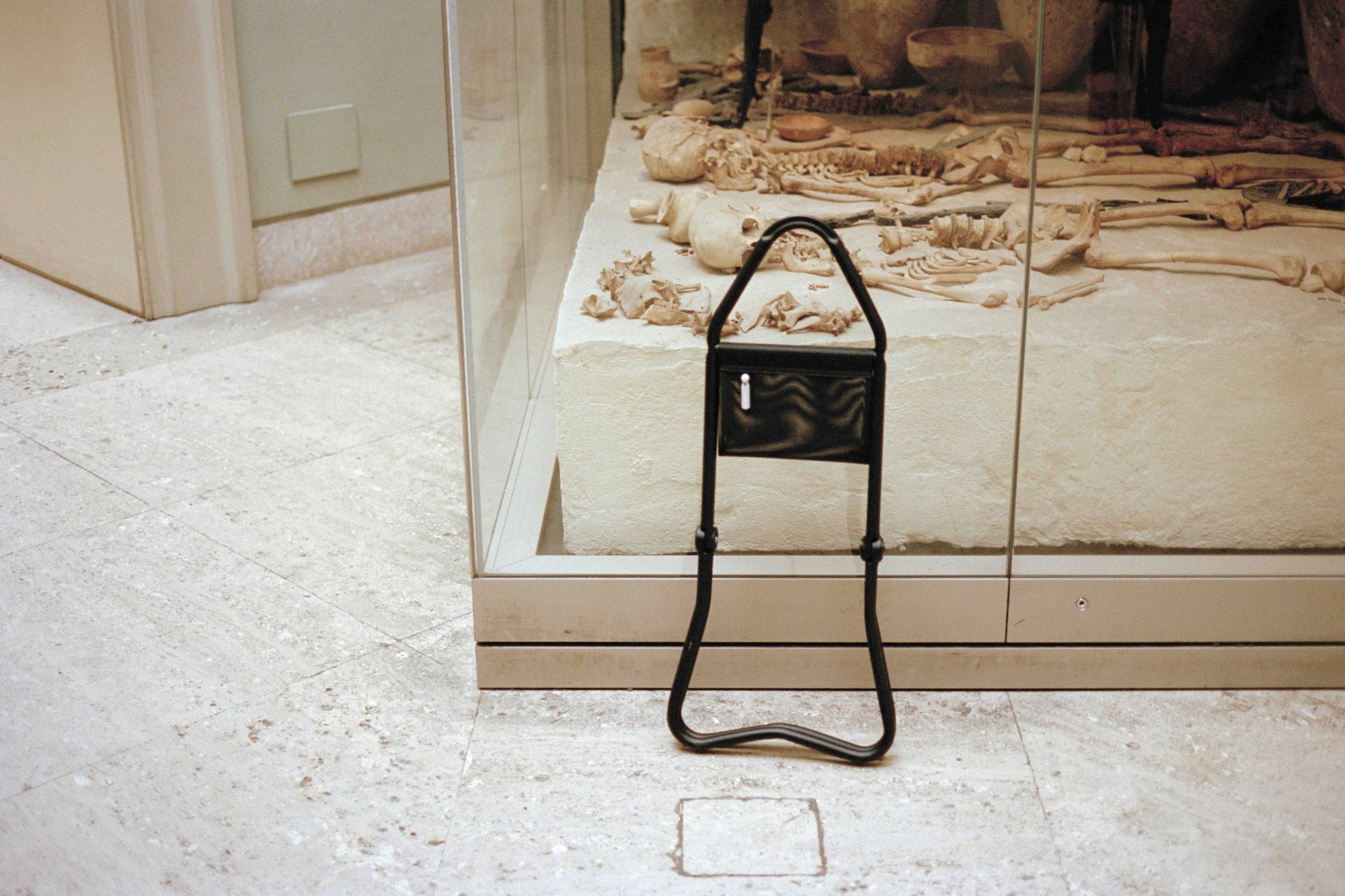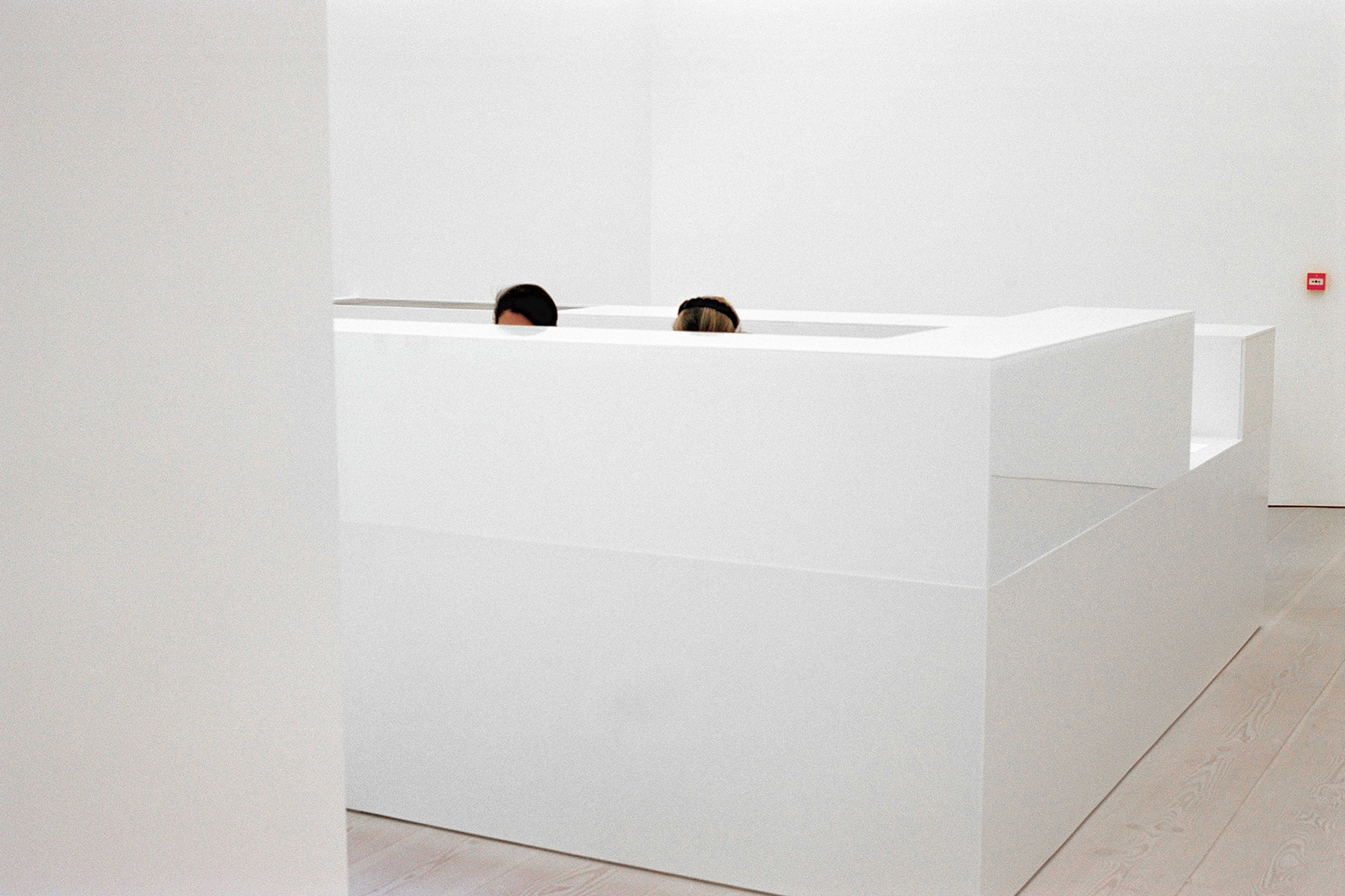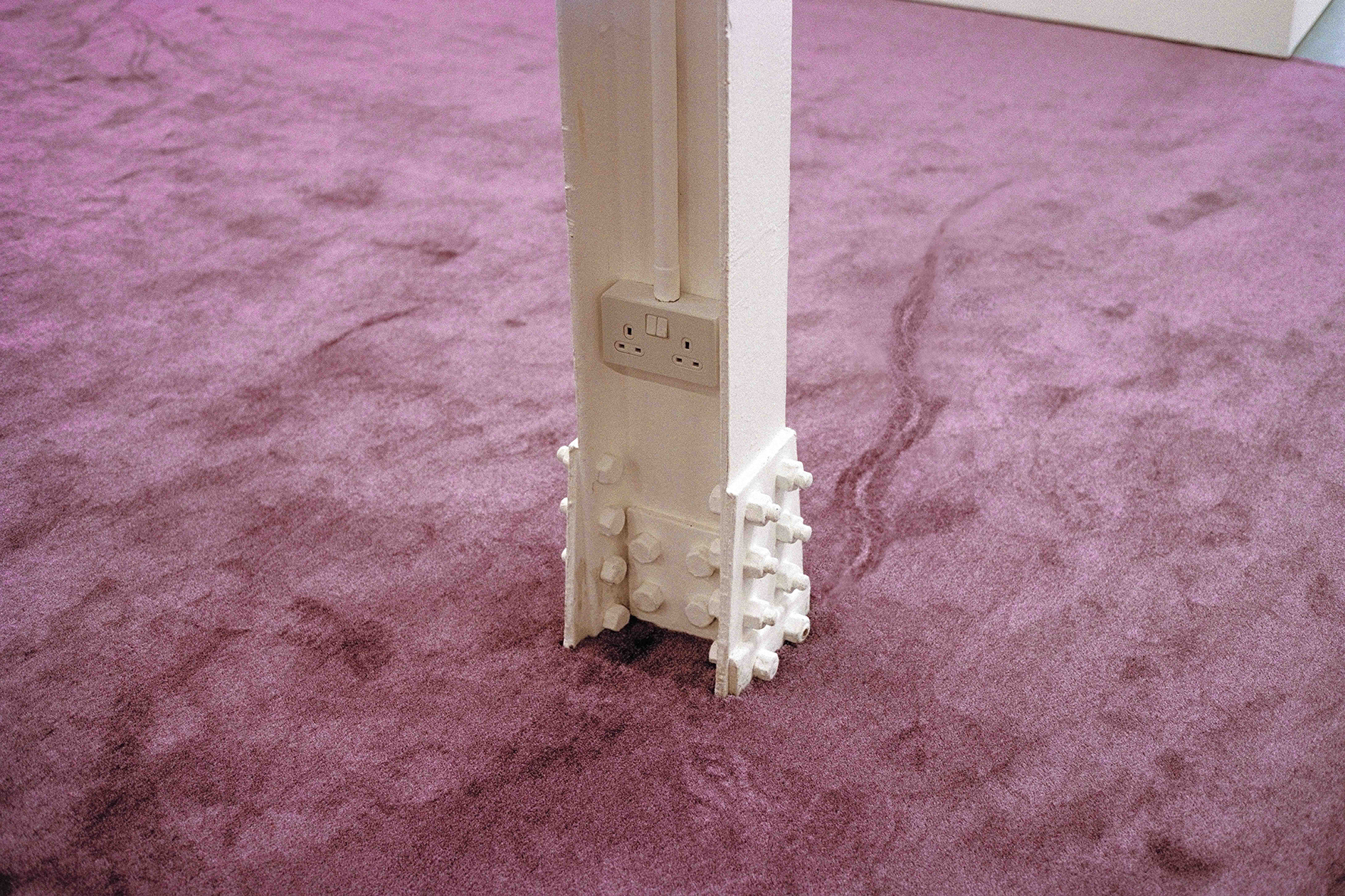With Frieze fever taking over London like an unstoppable advancing fog, Polly Brown launches her latest publication, Performances, to draw our attention away from the walls and instead calmly observe the quiet remnants of performed activities enacted by human presence in the gallery space.
From a crumpled tissue jammed between two steps to a cosy stack of monitor headphones, Polly captures the in-between spaces, those forgotten areas we pass through, which remain marked by our movement through them. The book, borne from a collaboration between the London-based photographer and publisher Philippe Karrer, is a wry critique of the gallery or institution positioned from precisely within its own walls.
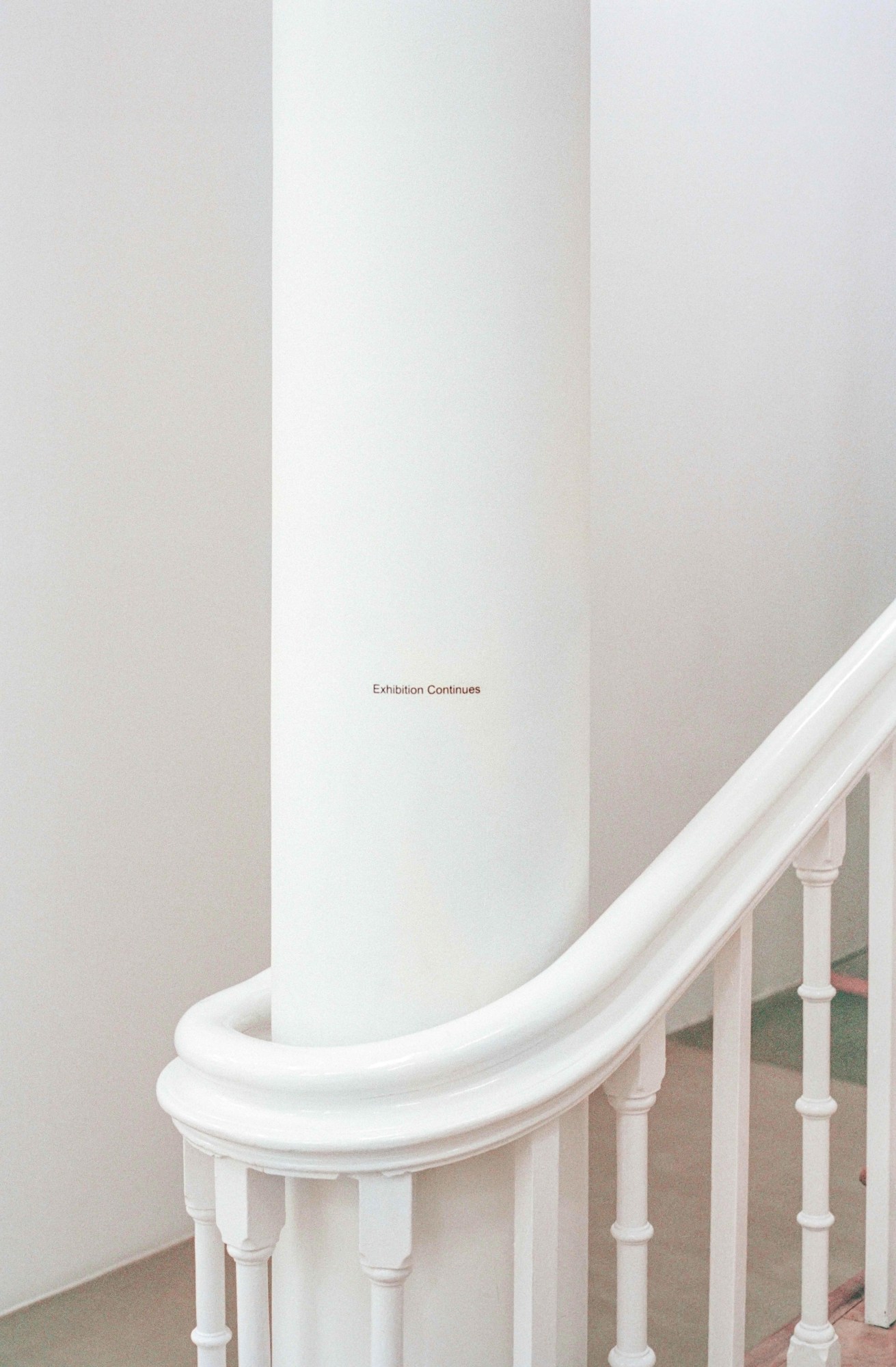
This project reminds me of your first book, Plants , where you photographed whatever greenery you could find in the offices of corporations, brands and institutions ranging from Google to J.W. Andersen and the ICA, I think i-D even features. To what extent does this new book feel like a continuation of, or development from, earlier projects?
I definitely find a weird enjoyment in sneaking around places where I’m not really supposed to be. In Plants that’s exactly what happened as I broke into or blagged my way past security guards. For this new book, initially at least, I was searching for a similar cheap thrill and so I had to take a similar stealthy approach.
Both projects take as their subject matter established institutions, entities that have well-engrained networks of behaviour, etiquettes and aesthetics. They both focus on the often ignored or unseen day-to-day of these spaces. I tend to focus on boring functional objects: the doorstop, the blinking light sensor, the dust someone missed, the grease on a light switch from someone’s hand. These elements, sometimes highly designed, always reek of an imperfection, a glitch. In their inanimateness the objects seem to carry their own personification, they seem to represent a base human element.
In Performances, this fixation has evolved from seeking out these glitches to creating small disruptions of my own. I now get my cheap thrills from stepping over the “Do Not Cross” line or altering the thermostat on the wall of the gallery by one degree. When you’re making tiny alterations or little vandalisms you are always keeping one eye looking behind you for the corner-dwelling invigilator. You feel a small victory in your pointless scrunched up press release that you leave on the floor.

What interests you about these otherwise forgotten or overlooked spaces?
I find I end up making a lot of work in these liminal spaces, not just about them. Airports, hotels, motorways, galleries, offices etc. I like shooting in spaces caught between two poles: place and non-place, A and B, the permanent and the temporary. There is something in their limbo state, between being remembered and forgotten, where I feel strangely at home.
The title, Performances , seems to suggest these spaces are activated by human presence – and indeed figures do inhabit many of the photos. Who is the performer?
All the images in the book are titled as if they’re documenting performances or traces of their aftermath. Whether observations or sneakily set up by myself, “performances” only ever exist with the activation of an audience. By documenting activities unintentionally inscribed into an environment, the photographs transform their anonymous protagonists into performers. The photographs can also document my cheap thrills as if I am the performer, with the fruits of my mischief as if commissioned by the galleries themselves.
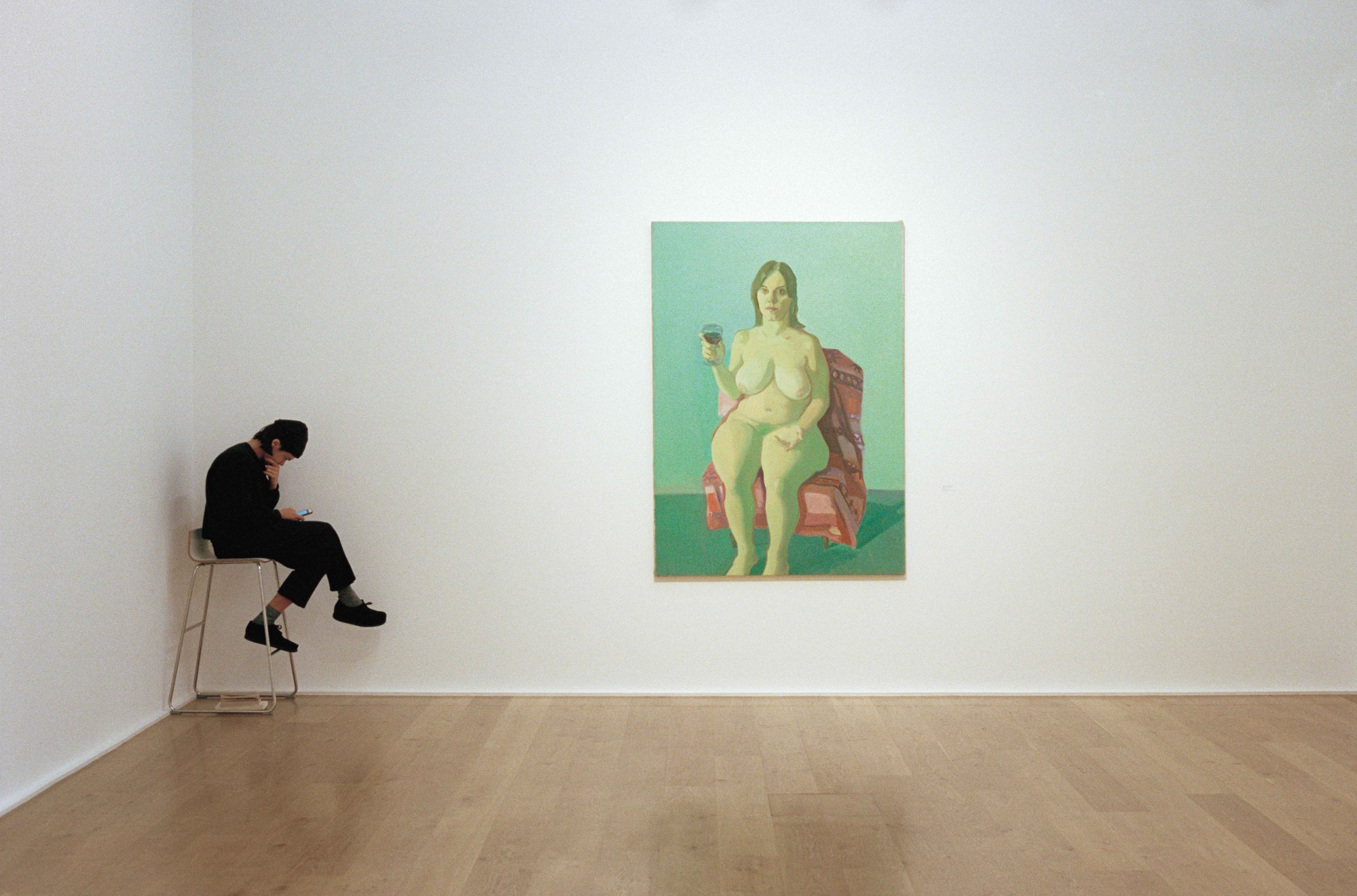
The cut-up technique you use to form the text in the book reminds me of the Exquisite Corpse game the Dadaists used to play. What was the drive behind using a mechanism that produces such arbitrary results? What do processes like this offer us in 2017?
The cut-up technique takes lines of pre-fabricated texts, muddling them together to create either surreal sentences or conversely revealing the formulaic banalities of the texts they draw from. The gallery press release can almost be recognised as a literary genre in its own right, full of its own clichés as well as its own moments of concise criticism. In playfully cutting up dozens of gallery texts, we poke fun at some of the more generic turns of phrase while allowing for the occasional powerful or profound sentence to bubble through.
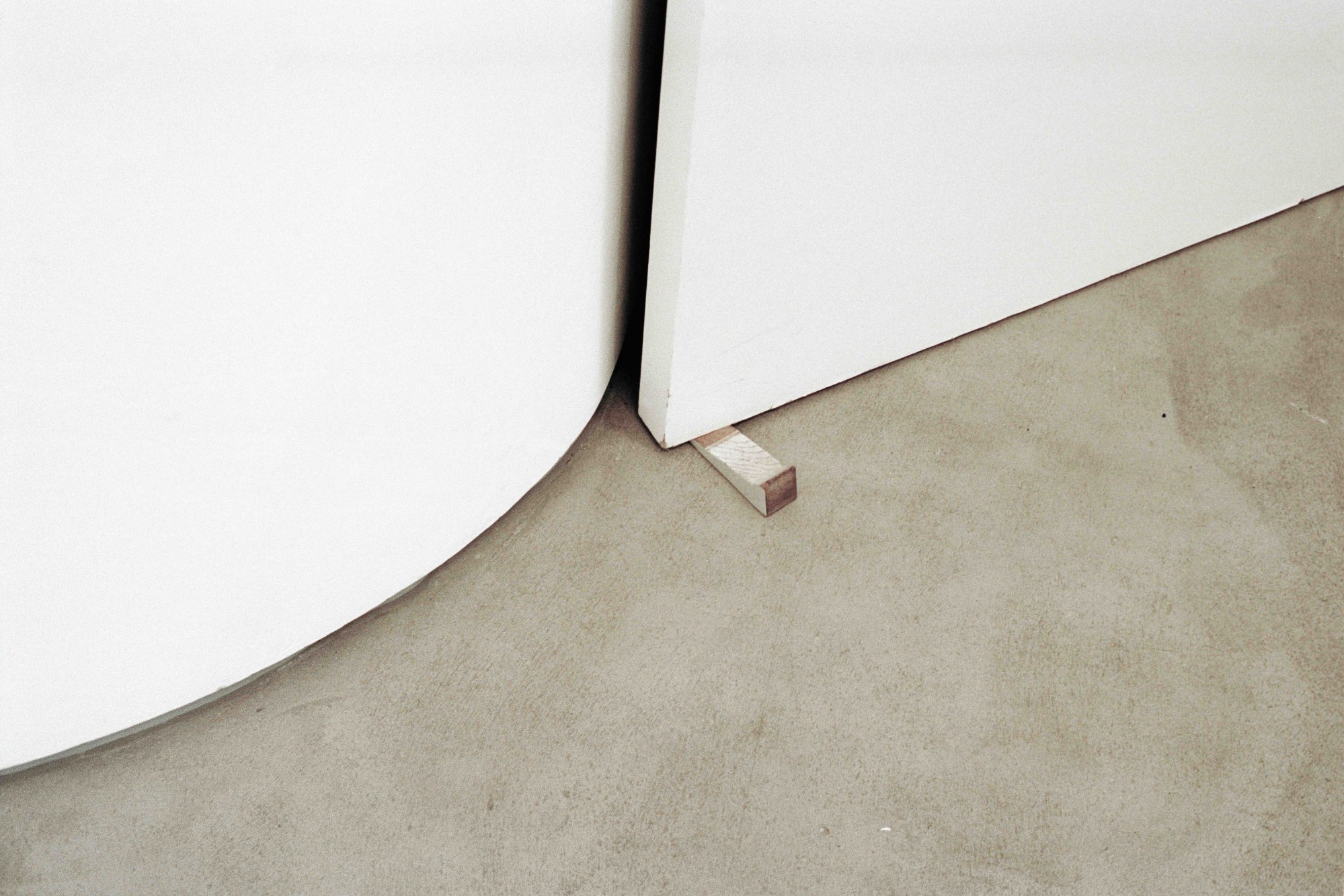
The images and text combined are very funny, which is notoriously difficult to pull off in an art context. What role does humour play in the book?
Hopefully it balances a gentle mocking and fond homage both to the gallery and the documentation of performance art. I only noticed these silly observations by spending time in these spaces, by being a weird critical fan. I perve on endless san serif wall texts just as much as I hate on them.
With the book release falling around the same time as Frieze, it feels like it could perhaps represent a challenge for us to re-examine the contemporary art gallery and/or institution as well as our behaviours within them. Is a wider claim or comment on the gallery system or the art world your intention?
The contemporary art gallery is designed to shift you into a liminal mind-space, removed from human banality and everyday functioning. Simultaneously highlighting and celebrating the cracks in its polished concrete, instead of bringing the gallery back down to earth, the book proposes unearthing it. So yes, in a way this project tries to emphasise the human scuffs within the otherwise pristine gallery system, tracking the unintentional performances of quotidian existence and challenging how we examine the veneers placed before us.
Performances is published by SPHERES Publication and is available here.
